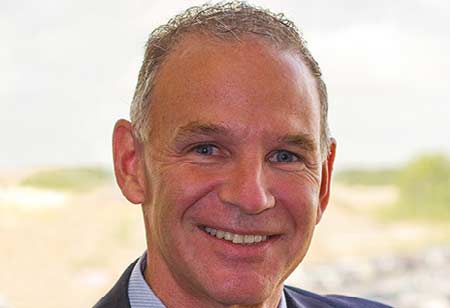THANK YOU FOR SUBSCRIBING

Closing the Gap for Research-to-Clinic Translation of Bioprinting
Didarul B. Bhuiyan, Senior Scientist, R&D, Biomedical at West Pharmaceutical Services Inc.

 Didarul B. Bhuiyan, Senior Scientist, R&D, Biomedical at West Pharmaceutical Services Inc.
Didarul B. Bhuiyan, Senior Scientist, R&D, Biomedical at West Pharmaceutical Services Inc.Although the very first research publication on bioprinting came out just two decades ago, the field has seen tremendous progress in academic research since then. Miniaturized tissues and organs up to centimeters in scale are routinely being built in academic labs. These excellent advancements in the field bears enormous potential to build personalized tissues and organs on-demand, solving the massive organ donation shortage crisis the world is currently facing. Last year, one major milestone was achieved when the very first 3D bioprinted human tissue was implanted in a patient part of a historic clinical trial, paving the way for a magnitude of bioprinting research output to translate into clinical reality.
Major technological hurdles such as the need for high-resolution super-fast bioprinters, cell instructive printable biomaterials, creation of vascular network for keeping cells alive via delivery of nutrients, transfer of gases and removal of waste etc. have been continually (and correctly) deemed as the challenges that need to be addressed for tissue and organ manufacturing at clinically relevant scale. However, hurdles related to containment of bioinks and bioprinted tissue engineered medicinal products are often overlooked and remain a gap ahead of full clinical translation of bioprinting.
Bioinks are materials that are used to create living tissues during bioprinting process. Bioinks typically are composed of living cells, different biopolymers, proteins, growth factors, and other cues that are helpful for cells to grow and mature as tissue. Bioinks are a vital biological starting material for manufacturing highly expensive bioprinted and tissue engineered medicinal products, and naturally, their containment is critical. It is imperative to ensure the quality of bioink products are not compromised through containment, storage and transportation processes. Currently, containment systems are not available for bioinks that are compliant with current Good Manufacturing Practice (cGMP) regulation enforced by FDA.
“Further industry wide collaboration needs to be formed between bioprinter manufacturers, bioink developers and container providers to ensure interoperability of these components for smooth manufacturing and use of bioprinted products.”
cGMP-grade bioink materials are also very limited. In most cases, bioinks need to be reformulated by the user, mixed manually with the cells, and transferred manually to a printing cartridge, introducing significant risk of contamination and variability, certainly not conducive for clinical application. cGMP-grade syringes and cartridges must be designed specifically for clinical application of bioprinting, where these manual processes can be minimized. The sterility requirement and microbial contamination risk of bioink and bioprinted products are similar to that of biological products. Therefore, closure integrity of the primary container for bioinks and bioprinted products is of paramount importance and needs to be maintained at the storage and transportation conditions to ensure the sterility of the product.
Contact surface of a bioink container should not be reactive, additive, or absorptive in a way that alters pre-determined bioink characteristics, e.g., physio-chemical properties and biological properties. Materials should be chosen carefully for these containers, including coating, to minimize extractables, leachables, and particulates. Particulates are the unwanted particles in the bioink, that may arise from the single-use plastics used in the bioink manufacturing process such as mixing, transferring, etc. Particulates may also arise from the container components such as the friction between the piston & cartridge during bioprinting, affecting the quality and consistency of the bioink product.
Particulates and aggregates may create blockage in the printing nozzle, requiring higher pressure for extrusion resulting in higher shear stress experienced by the cells leading to cell damage & death. Blockage may also affect the printing process and result in flaw in the structure, that may have detrimental impact on the function of the printed tissue. Particulates may exhibit pyrogenic properties and could also interact with the cells contained within bioink, which may affect the biological function of the cells and eventually the safety and efficacy of the bioprinted tissue engineered product. The container material is critical in terms of mitigating particulate risk. Piston and cartridge material, coating material and process, if any, would play a large part on the particulate generation during bioink handling and bioprinting processes. Primary container closure system for bioinks and bioprinted products should be cleaned, sterilized, and processed to remove pyrogens and particulates. Appropriate quality controls criteria should be in place for all the components of container closure systems, to reduce the risk of particulates.
Bioink container material should be conducive to freezing, long term storage, shipping, and thawing. Container material should be easily sterilizable and the design and geometry should be favorable for aseptic handling of bioink for mixing with cells and filling of cellular bioink. Containers should withstand the physical changes of the bioink while freezing, thawing, transportation, for example, the expansion or shrinkage of bioink while freezing or thawing. Container closure integrity should be maintained at the ultra-low temperature and conditions to ensure maintenance of bioink sterility and other specifications, i.e. chemical, biological, and mechanical properties.
Additionally, bioink container needs to be compatible with the pneumatic systems found in the bioprinters. The geometry of bioink containers must be compatible with the print heads of the bioprinters as well as the adapters and fixtures used for pneumatic or mechanical deposition of bioinks. At the same time the friction between the piston and the cartridge needs to be minimized to lower the break-loose & gliding forces and ensure the cells do not get damaged by high shear forces. Moreover, many bioink formulations are light sensitive and, in this case, containment needs to protect the product from light exposure during storage.
Despite these challenges, the bioprinted tissue engineering products are rapidly progressing towards clinical trials. These developments are being driven by considerable investment from corporate collaborations between therapy developers and enabling technology providers. Further industry wide collaboration needs to be formed between bioprinter manufacturers, bioink developers and container providers to ensure interoperability of these components for smooth manufacturing and use of bioprinted products. These advances will accelerate the translation of this magnificent academic research success for bioprinting to become a clinical reality and overcome the debilitating organ shortage.
Read Also























ON THE DECK